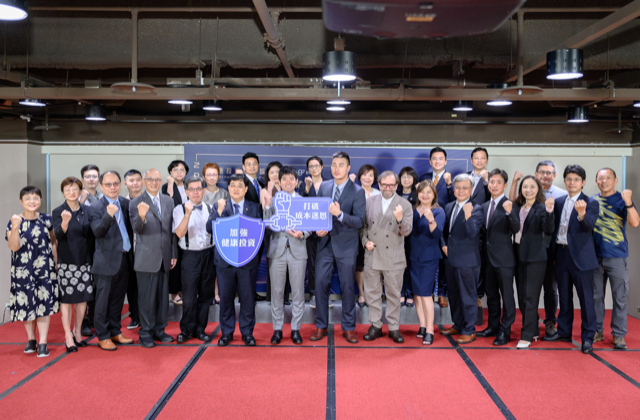Insideview
Launch of Investing in Health report

The ECCT participated in the launch of the "2023 Taiwan Investing in Health Report" that was commissioned to PwC by the International Research-Based Pharmaceutical Manufacturers Association (IRPMA). At the event ECCT Chairman Giuseppe made opening remarks and Boonhuey Ee, Co-Chair of the ECCT’s Healthcare Sustainability and Co-chair of IRPMA Investing in Health Committee made closing remarks.
The report highlights the fact that Taiwan’s Current Healthcare expenditures (CHE) as a share of Gross Domestic Product (GDP) are lower than those of comparable countries, and there is still room for growth in several health indicators. At the press conference for the launch, the ECCT was one of 14 organisations, along with medical and academic associations, the American Chamber of Commerce, Japanese Chamber of Commerce and patient groups that called for viewing healthcare expenditures as investments in health in order to establish a resilient and sustainable medical environment.

While Taiwan has long been renowned globally for its excellent health insurance and medical system, holds a competitive position in the biotechnology industry and Taiwan’s performance in various health indicators is good, according to the report’s findings, there is still room for improvement. When comparing standardised death rates for prevalent diseases like cancer, cerebrovascular diseases, and diabetes with five OECD countries (Canada, the UK, Germany, Japan, and South Korea) Taiwan’s rates are higher. Moreover, based on the Universal Health Coverage (UHC) index proposed by the World Health Organization, Taiwan lags behind those countries in basic health service coverage and medical financial burden, indicating untapped potential in major disease protection and healthcare accessibility.
The report analyses global data and finds that healthcare expenditure directly influences national health levels. Countries with higher CHE tend to have better life expectancy and lower disease-related disability-adjusted life years (DALY). Conversely, countries with lower healthcare spending, pharmaceutical spending and new drug reimbursement rates tend to have poorer life expectancy.

Taiwan’s CHE as a percentage of GDP is only 6.1%, lower than the OECD average of 9.6%, with pharmaceutical expenditure accounting for only 1.2% of GDP. Limited budgets significantly impact medical resources. For instance, In Japan, up to 95% of new drugs have been included in the national health insurance coverage, with most receiving reimbursement within 60 days, and the slowest taking no more than 90 days. In contrast, the reimbursement process for new drugs in Taiwan’s national health insurance system takes an average of over 700 days, and the approval rate continues to decline. As of 2021, only 55% of new drugs have received reimbursement approval (based on accumulated statistics over six years). Starting from 2050, Taiwan is expected to become an ultra-aged society with over seven million people aged 65 and over, resulting in medical expenses exceeding NT$620 billion annually.
According to a survey by the European Federation of Pharmaceutical Industries and Associations (EFPIA), innovative cancer treatments contribute €717 million annually to the EU’s GDP. In addition, Japan, which operates a similar social health insurance system, raised its consumption tax rate from 5% to 8% in 2014, and further raised it to 10% in 2019, allocating the revenue to support childcare, healthcare, and long-term care services. This resulted in significant improvements in life expectancy and health indicators, serving as a reference for Taiwan.
Regarding the implementation of investing in health policies, the report consolidates opinions from various sectors and proposes the following recommendations:
1. Expand diversified funding for national health insurance and improve resource utilisation efficiency, fostering a shared consensus on "investing in health" among the public.
2. Refer to international standards to raise healthcare expenditure, with Japan’s healthcare expenditure as a percentage of GDP at 11% as a long-term goal and gradually approaching the OECD average of 8-9% as a short-term goal.
3. Improve accessibility to new drugs to enhance national health and strengthen the alignment of Taiwan’s healthcare system with international standards and the competitiveness of the biotechnology industry.
4. Establish a cross-ministerial task force under the Executive Yuan, making increasing investment in health and improving health indicators part of the policy objectives, promoting the "Whole-of-government approach" collaboration, and continuously gathering opinions from private organisations for policy-making considerations.
